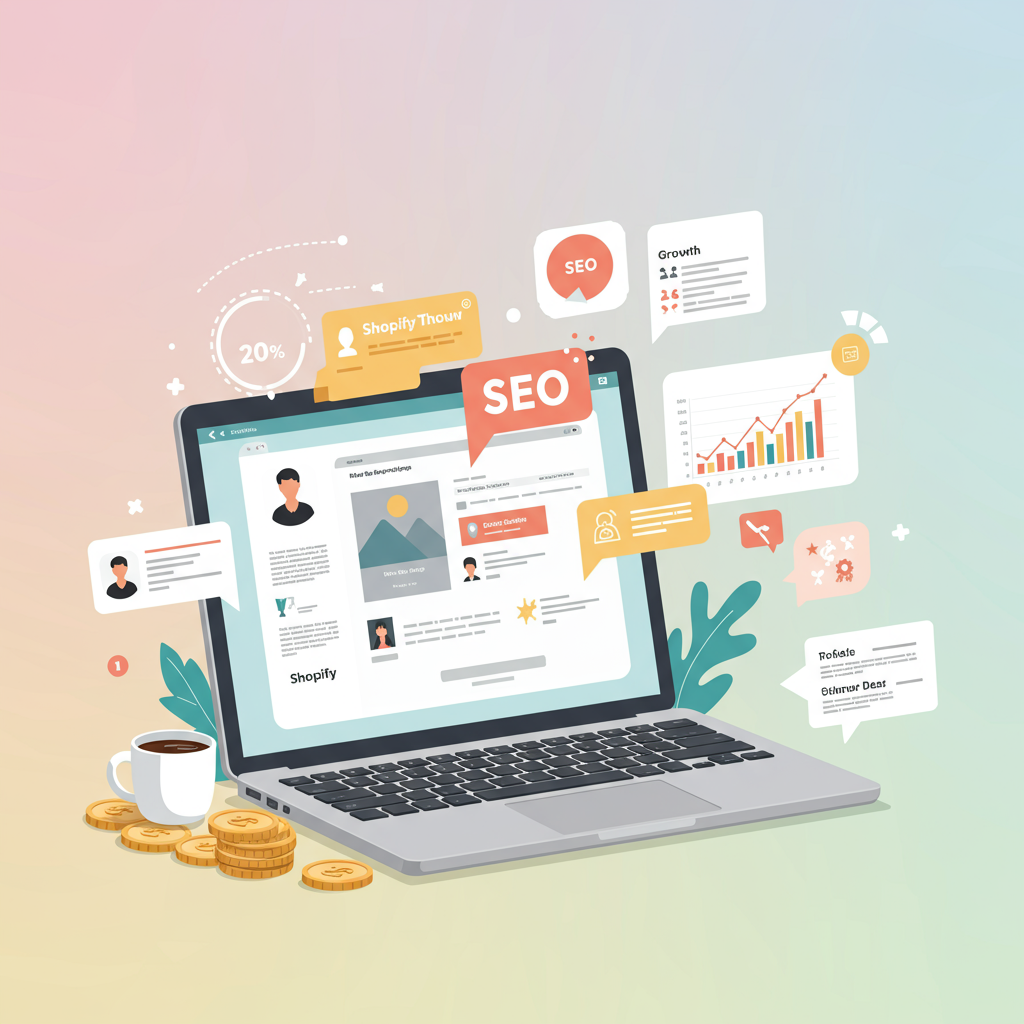Unlock higher rankings and boost your sales by optimizing your Shopify product pages for search engines.
As a Shopify merchant, you know the importance of getting eyes on your products. While marketing campaigns and social media are vital, the organic traffic you can gain from search engines is a goldmine, especially when it comes to your product pages.
Today, I want to walk you through the essential steps to significantly improve your Shopify product page SEO. My goal is to help you attract more qualified visitors directly to the products they’re looking to buy, turning browsers into loyal customers.
The foundation of any good SEO strategy begins with understanding how search engines ‘read’ your pages. For product pages, this means ensuring every element, from your title to your images, is optimized for discoverability.
Let’s start with the basics: your meta title. This is the clickable headline that appears in search results. I always recommend making it compelling, including your primary keyword, and keeping it within the character limits (around 50-60 characters) to avoid truncation.
Following the meta title is the meta description. While not a direct ranking factor, a well-crafted meta description acts as a mini-advertisement. I use this space to summarize the product’s benefits, include a call to action, and naturally weave in relevant keywords, aiming for about 150-160 characters.
Before you even touch your Shopify admin, the most crucial step is thorough keyword research. I can’t stress this enough: understanding what your potential customers are typing into search engines is paramount.
For product pages, I focus on highly specific, long-tail keywords. Think about the exact phrases someone would use when they’re ready to purchase, like ‘organic cotton baby onesie 0-3 months’ rather than just ‘baby clothes’.
There are many tools available to assist you with keyword research, from Google Keyword Planner (which is free) to more advanced paid options like SEMrush or Ahrefs. I often start with Google’s ‘People also ask’ section and related searches for inspiration.
Don’t forget to analyze your competitors. What keywords are they ranking for? What kind of language do they use in their product descriptions? This can provide valuable insights and uncover opportunities you might have missed.
Now, let’s talk about your actual product title on the page, which typically serves as your H1 heading. This should be clear, descriptive, and include your primary keyword. It’s what users see first when they land on your page, so make it count.
Your product description is where you truly sell your product. I advise against simply copying and pasting manufacturer descriptions. Instead, write unique, engaging content that highlights benefits, not just features.
To make your descriptions more readable and SEO-friendly, I always incorporate headings (H2, H3), bullet points, and bold text. This breaks up large blocks of text and makes it easier for both users and search engines to digest.
Naturally integrate your target keywords throughout the description. Avoid keyword stuffing; the goal is to write for humans first, search engines second. If it sounds unnatural, it probably is.
Emphasize what makes your product unique. Is it eco-friendly? Hand-made? Does it solve a specific problem? I make sure these unique selling propositions are front and center in my descriptions.
Image optimization is another critical area I focus on. High-quality images are essential for conversions, but large file sizes can slow down your page, negatively impacting SEO and user experience.
Always use descriptive alt text for your product images. This text is read by screen readers for visually impaired users and by search engines to understand the image content. I include relevant keywords here.
Similarly, I name my image files descriptively before uploading them (e.g., ‘organic-cotton-baby-onesie.jpg’ instead of ‘IMG_001.jpg’). This provides another small SEO boost.
Before uploading, I compress my images using tools like TinyPNG or Compressor.io. This significantly reduces file size without compromising quality, leading to faster page load times.
Your product page URLs should be clean, concise, and keyword-rich. Shopify generally does a good job with this, but I always double-check that the URL slug accurately reflects the product and includes a primary keyword.
Internal linking is a powerful, often overlooked SEO tactic. I link to related products, relevant blog posts, or category pages from my product descriptions. This helps distribute ‘link juice’ and keeps users on your site longer.
Product reviews are gold for SEO. They provide fresh, unique content, often contain long-tail keywords, and build trust and social proof. I actively encourage customers to leave reviews.
Shopify automatically implements some schema markup, particularly for product pages, which helps search engines understand your product’s price, availability, and review ratings. I ensure this information is accurate and complete.
Page speed is a major ranking factor. I regularly check my Shopify store’s speed using tools like Google PageSpeed Insights. Optimizing images, using a fast theme, and minimizing app usage can all contribute to better performance.
With the majority of internet traffic now coming from mobile devices, ensuring your product pages are mobile-responsive is non-negotiable. Shopify themes are generally responsive, but I always test them on various devices.
Finally, monitoring and analysis are crucial. I regularly check Google Analytics to see where my traffic is coming from and how users interact with my product pages. Google Search Console helps me identify indexing issues and search queries.
SEO is not a one-time task; it’s an ongoing process. I continuously refine my product page content, update keywords, and monitor performance to stay ahead of the curve and maintain my rankings.
What do you think about this article? I’d love to hear your thoughts and any strategies you’ve found successful for your Shopify product pages!
By diligently applying these strategies, you’ll be well on your way to attracting more organic traffic, improving your search engine rankings, and ultimately, driving more sales for your Shopify store. Happy optimizing!






